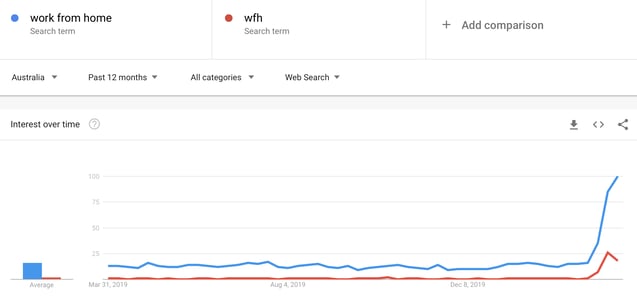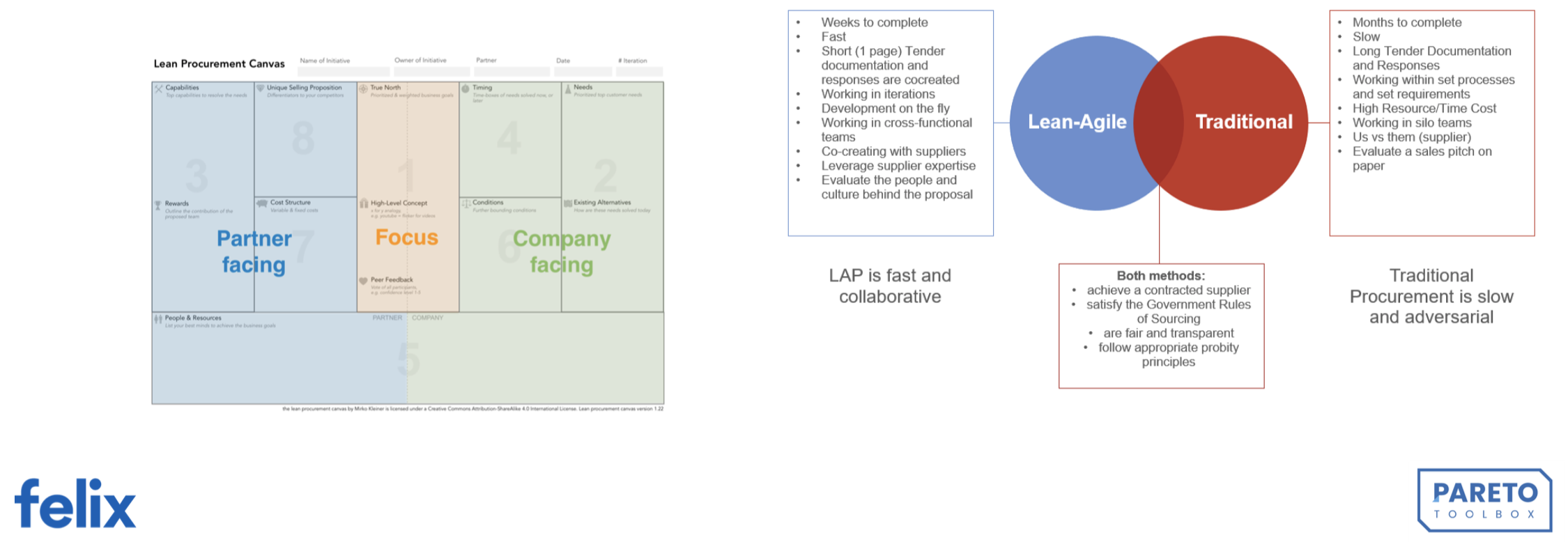What WFH means for paper-based & manual procurement processes

Consider some data from Gartner’s recent research:
- In ten years’ time, the demand for remote work will increase by 30% as Generation Z fully enters the workforce.
- 64% of today’s professionals say they could work anywhere, while work-from-home policies are in place at 71% of surveyed organisations.Now with the global pandemic, coronavirus can accelerate digital transformation in unexpected ways. Google searches for terms such as “work from home” and its abbreviation “WFH” have shot up exponentially. Australia is no exception as we’re being forced into the world’s largest “work-from-home experiment.”

Indeed, it hasn’t been smooth sailing for a lot of organisations. Some sectors or roles don’t lend themselves to the remote model (e.g. frontline staff, construction workers). Some organisations are not ready to roll out the model in such a short time frame due to limited resources.
Procurement and supply chain professionals who are knowledge workers may already find themselves having to adapt to this new normal. But at what cost?
Inefficient tools in the spotlight
With so many paper-based or manual processes still in place, procurement departments within organisations that are less advanced in their digitisation journeys are facing added challenges during these social distancing periods.
In pre-crisis times, legacy tools such as Excel has been prevalent among half of surveyed procurement organisations. We have noted some inherent shortcomings of this corporate classic tool in a previous blog post. That is not to mention the sheer size and number of spreadsheets, often located in silos. When managing multiple projects with a lot of dependencies, this can multiply the risk of errors exponentially.
Imagine managing sourcing projects in 50 tabs and 200 columns with up to 1,000 rows of data in each one of those tabs!
Email, although an electronic means of communication, has not got a good reputation for visibility and efficiency either.
How about paper-based processes? A PASA benchmarking report noted 42% of procurement leaders considered “reducing paper-based processes” as a key future performance measurement. This means the inefficient manual work involved in processing paperwork and transactions is still common.
Added friction to procurement operations
Note that the issues outlined below have already existed pre-crisis. They are only exacerbated with COVID-19 forcing people to work from home on a mass scale.
This is a typical procurement and supply lifecycle (stage 1 and 2 can swap with each other depending on organisations’ requirements). Within each stage, there are multiple processes involved.

Procurement & supply lifecycle
Let’s dive into the potential challenges when people conduct manual procurement processes while working from home.
Sourcing
Where supplier data is siloed, and sourcing events are managed via email or phone calls:
- Without a central supplier database, it is difficult for staff to find suppliers when they need them.
- It is hard to drive process governance amid the shortage chaos. Many sourcing events may not be documented for future audits. This lack of visibility represents risk for management.
- Pre-agreed rates with suppliers before COVID-19 may not be accurate anymore. The updated information may be buried in someone’s email or spreadsheet.
If there was no way to quickly engage preferred suppliers without consulting the central procurement team, there will be multiple back-and-forths via email. Information could be lost, delayed and critical supply needs not addressed timely enough.
Organisations that run sourcing events via email blasts and spreadsheets may find that the time spent copying and pasting information would be much better spent elsewhere, e.g. working with suppliers on alternative arrangements during the crisis.
Prequalification & compliance management
Manual processes inhibit the ability to onboard new vendors to fulfil needs, and present risk around monitoring vendor compliance:
- Paper-based document storage causes issues when staff cannot easily access the information they need relating to vendors or projects
- Documents are normally held on internal servers, not cloud-based: questions around access, which may lead to the same situation as paper
- Documents buried in email chains or Dropbox folders: wasting valuable time in retrieving information
A more dangerous issue is a lack of key alerts around vendor compliance.
Where information such as insurance expiry dates have previously been monitored in spreadsheets, this is now very hard to track for teams in the remote work environment. Expired compliance documents may not be picked up while a vendor is completing works, opening the organisation up to a significant level of risk.
Approval workflows
The approval process can take place during any stage of the procurement and supply lifecycle above. It is also where potential bottlenecks happen.
- For those that are used to printing out documents to peruse and hand to relevant people for approval (wet signatures), this is now very difficult.
- For those that use email and/or phone to obtain approval, chasing subject matter experts in even more dispersed locations would be more time consuming.

Communication
The heightened need to stay connected during these times presents some challenges for both Internal and external communication.
- Apart from inefficiency, back-and-forth phone calls and email chains can leave organisations exposed to probity issues
- A high risk of email phishing, unverified vendors/claims leaving organisations exposed to fraud (more on this in the next instalment of this series)
Other issues
- Key personnel are not available: particularly if there is no one else who knows where the correct information is, or if the system requires expert knowledge to operate
- Limited access to on-premise system or the system becomes unavailable
- Inefficiency: Waiting for data to be sent from team members with access to it, instead of being able to access information from a central repository autonomously
Success factors for remote work in procurement
Trust
“Out of sight out of mind.” For some employers, allowing remote work may trigger a fear of reduced productivity due to a lack of physical supervision.
The better approach would be to have trust and empower staff through implementing progressive policies and technology.
“When the dust settles, we’ll likely see that our remotely working employees were just as productive during this crisis — if not more so.”
Process & policies
Ideally, before sending workers home, organisations should already have rolled out or updated their procurement procedures, which would help:
- Ensure business continuity through critical processes (e.g. sourcing supplies)
- Manage exceptions as they arise
- Evaluate roles, responsibility, location of resources and set clear expectations
Technology
 Poor technology and/or infrastructure is the biggest barrier to effective remote working. Generally, people need tools for:
Poor technology and/or infrastructure is the biggest barrier to effective remote working. Generally, people need tools for: - Communication
- Collaboration
- Project management/visibility
Now more than ever, procurement digitisation is critical to enable professionals to access the necessary information and continue performing value-adding tasks, while technology creates efficiency and removes the risk of human error.
In the absence of adequate technology, organisations can leverage this opportunity to measure the impact on employee performance and productivity to build a business case for software investment in the long run.
The future of work is already here, even though it is sooner than expected. Those who can adapt will survive and come out stronger.
Stay tuned for the next article in this series, where we explore ways to get your IT game strong throughout and beyond the COVID-19 crisis. Or book an online demo to learn more about how Felix helps procurement teams in the remote work environment.
---
You may be interested in our recent webinar on risk mitigation with Bank of Queensland's former Chief Risk Officer. Check it out here.

Related Articles

Giving your procurement process & governance a health check
Procurement governance has never been a particularly exciting topic. Given increasing compliance requirements, procurement has given and been given a host of policies and guidelines to follow. But is it enough to mitigate procurement risks and ensure compliance?

5 reasons why Procurement Schedule is better than using spreadsheets
Research has found that nearly 90% of spreadsheets have errors. These are mainly human errors, as we know people make mistakes, especially when under pressure. Couple this with the fact that spreadsheets are difficult to maintain and manage, and tend to become more complicated as projects grow.
Let's stay in touch
Get the monthly dose of supply chain, procurement and technology insights with the Felix newsletter.




